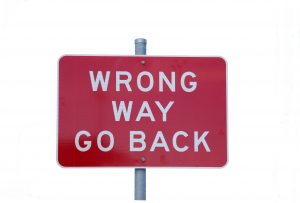Subject Area: Inventory reduction metric
Goodhart’s Law
 When thinking about the measurement of actions and outcomes relating to spare parts inventory reduction it is worth considering the work of a British economist, Charles Goodhart.
When thinking about the measurement of actions and outcomes relating to spare parts inventory reduction it is worth considering the work of a British economist, Charles Goodhart.
In 1975, Goodhart wrote what became known as ‘Goodhart’s Law’. The simplified version states:
When a measure becomes a target, it ceases to be a good measure.
Essentially, Goodhart is warning us about the law of unintended consequences.
That is, often when we use a measure targeting a specific goal, people will aim to achieve that goal regardless of the consequences.
Tying that back to Peter Drucker, even if it harms the purpose of the organization.
Or perhaps even if it doesn’t actually achieve the goal for longer than the point in time of the measurement.
Consider this example.
With spare parts inventory managers will often set a goal focusing on a reduction in inventory value by a specific target date. On the surface this is not unreasonable.
There is (hopefully) a management expectation that the team working on this will take sensible actions that will reduce the value of the inventory (achieving the goal) without damaging the ability of the organization to fulfil its mission with that inventory.
However, what happens when the inventory reduction metric becomes the target without consideration of longer-term consequences?
Then companies experience what is often referred to as a ‘slash and burn’ approach to inventory reduction.
People will remove whatever they can, however they can, just to achieve the goal.
Sometimes this will leave the operational part of the business short of necessary spare parts, resulting in extended downtimes and inefficient labor utilization. Thus harming the purpose of the organization.
This type of action is most prevalent as the deadline approaches, maybe the end of the fiscal year or perhaps the quarter.
The goal is to achieve the metric target at that singular point in time, with little thought about what happens next month of quarter.
A slightly less damaging approach occurs when, in the last month of the fiscal year, people stop reordering spare parts that need replenishment.
This results in a reduction in the value of the ‘stock on hand’ for that point in time – the end of the reporting period. At the beginning of the next period all those orders are now placed, and the inventory goes back to its previously bloated state. Thus, not achieving the goal at all.
Be wary of how you set and manage an inventory reduction metric.
For information on our Pro Level spare parts management online training please visit our Pro Level page.
Posted by Phillip Slater